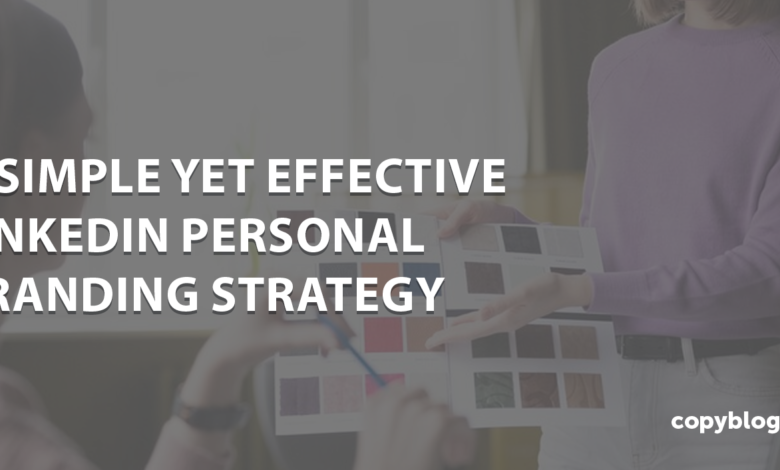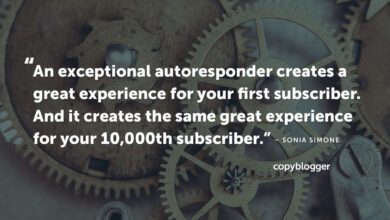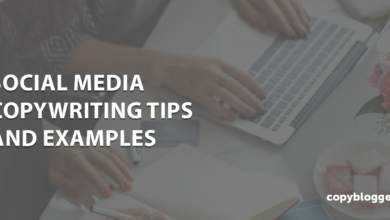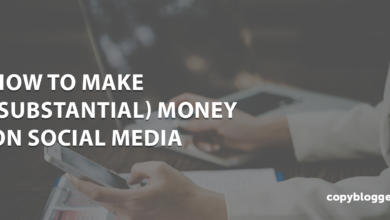The LinkedIn Personal Branding Strategy Influencers Use

You don’t need an impressive resume to build a strong personal brand on LinkedIn.
Many solopreneurs with modest prior accomplishments have successfully built strong personal brands on LinkedIn and monetized their followings to build six and seven-figure businesses.
For example, solopreneur Justin Welsh was previously a startup executive and now makes over $5 million per year from his personal brand on LinkedIn. Brett from Design Joy was previously a freelancer who turned his LinkedIn followers into seven figures in revenue.
These people are proof that anyone can build a strong personal brand on LinkedIn.
But there is one thing they all have in common: They consistently execute a proven LinkedIn personal branding strategy.
In this post, we’ll reveal the strategy many successful solopreneurs use to build their personal brands on LinkedIn.
And the best part is that anyone can execute it. It just requires time, consistency, and effort.
1. Identify Your Target Audience
There’s a key difference between people with strong personal brands and casual social media users.
The casual social media user publishes content they find interesting, while those with personal brands publish content their audience finds interesting.
The first step to building an audience is to define who you’re trying to attract and the specific problems you can help them solve.
Whether you’re a founder trying to attract customers or an employee starting a side hustle, define the title of the person you can help and the specific pain points you can help them solve.
Then, create an audience avatar to define exactly who you’re targeting. Creating an audience avatar may seem basic, but defining the exact title, pain points, and demographics of a single person you’re writing to will make your content much more relevant to your audience and ultimately make your content strategy much more effective.
You can use an audience avatar template like this one to get started.
A key mistake many people make when filling out their audience avatar is simply answering the questions based on assumptions about their target audience. However, your assumptions about your target audience may be inaccurate.
Therefore, take some time to identify three to five people on LinkedIn who are your target audience and use that information to fill out the demographic and background information based on their profiles. You can also see what type of content these people engage with and share.
For example, if you’re targeting content marketing executives, you could browse through this person’s profile to learn more about exactly who you’re targeting, the topics he frequently talks about, and even the types of people he follows:
This research will help you nail down exactly who you’re targeting.
Another resource is SparkToro. You can type in any keyword and see what types of websites these people visit, the influencers they follow, and more:
You can then browse through the content on these websites and the content posted by these influencers to see what topics resonate with your audience.
However, the most challenging part is figuring out the specific pain points your audience struggles with. Joining Facebook groups (for B2C) or Slack groups (for B2B), is a great way to learn about pain points as people use these resources to ask questions.
Then, make a habit of frequently checking these groups to learn about commonly asked questions. You can also search specific topics within these groups to learn what questions people have about certain topics, which can help you improve your content strategy.
2. Optimize Your Profile For Your Target Audience
Many people talk about themselves and their own accomplishments in their LinkedIn profile.
However, think about your profile like you’d think about writing copy for a business website. Rather than just talking about yourself and your accomplishments, think about how you can communicate to your audience that you are the authority they’ve been looking for to solve their problems.
While you can still talk about your accomplishments, speak about it in the context of how your experience can help them.
Here’s how to optimize each aspect of your profile.
Headshot, Banner Image, And Tagline
If you look at virtually any LinkedIn influencer’s profile, you’ll notice they all have professional headshots and a branded banner image.
Similar to a real business, a branded banner image and a professional headshot add credibility.
Here are just a few examples:
For the tagline, most people list their position at a company, though you can also use this to communicate the value you provide. For example, you could use the following format:
“I help X companies achieve Y results through Z.”
About Section
Most people use the About section to discuss their accomplishments, but this is a great opportunity to again communicate the value you can provide to your target audience.
Irina Maltseva’s About section is a great example. She tells her target audience (SaaS marketing executives) that she previously was the Head of Marketing at Hunter and lists specific pain points she felt as a SaaS marketer.
Then, she establishes her credibility by stating accomplishments, like growing traffic from 30k to 180k monthly sessions, and that she regularly contributes to reputable blogs her ideal audience probably reads, like Ahrefs, SEMrush, and HubSpot.
If you’re feeling stuck while writing the About section, consider using this framework:
- What are the pain points your audience feels?
- How have you solved them in the past, and for what companies?
- What numbers and/or brand names can you share to add credibility?
Additional Credibility
If you’re hiring a new employee or contractor, you’re much more likely to trust them if a colleague or influencer you already trust recommended that person.
Additionally, if you see that the person contributed to publications you like and trust, you’re probably even more likely to trust them.
So take some time to fill out the following sections of your LinkedIn profile:
- Recommendations she has received from colleagues
- Publications she has contributed to
- Licenses and certifications
- Skills
Here are some great examples of completed LinkedIn profiles:
3. Identify Winning Content Ideas And Establish Frameworks
It’s important to post content you find interesting, but if you’re creating content specifically with the intention of building your personal brand on LinkedIn, only post content that is also interesting to your target audience.
To find content ideas that resonate with your target audience, you can use SparkToro to look at the most popular content on websites your audience visits and browse through the Facebook and Slack groups to see the most popular topics.
For example, blurriness is a common problem in this group for people who own Sony cameras.
So, discussing how to create focused images and mistakes that can make your images blurry are excellent content ideas:
Then, create a list of those topics and specific pain points around them in a document.
Now that you know what topics to create content on, the next step is figuring out how to make your content on that topic uniquely interesting to your target audience.
The most effective way to do this on social media is to speak from personal experience. I particularly like the templates that Nicholas Cole teaches to his ghostwriters.
These templates are excellent because they’re repeatable, which speeds up the content creation process, and they leverage your personal experience.
By identifying content topics that resonate with your target audience and fitting them into these frameworks, you can easily create content that resonates with your audience and establishes you as an authority by leveraging your personal experience.
Using your personal experience also automatically makes the content unique and authentic, which is excellent for social media.
4. Establish A Consistent Publishing Schedule
The number one reason people fail at personal branding is because they don’t publish consistently. You probably won’t receive much engagement during the first few months, which is certainly discouraging, but if you create enough content, you’ll figure out what resonates with your audience and what kind of content you enjoy creating.
In addition, social media content is unlike evergreen blog content, as it only has a lifespan of a few days. Therefore, you need to publish consistently to build an engaged audience and stay top of mind.
Therefore, here are a few tips to help you publish consistently.
First, create content in batches and then use a content calendar like Buffer to schedule your content in advance.
The next question is: How often should you publish content?
The answer is as often as you can consistently create content your audience finds helpful.
If you post mediocre content simply for the sake of publishing something, it will do more harm than good, as your audience will eventually stop reading your posts.
In addition, if you set an ambitious publishing schedule and can’t keep up with it, you’ll probably burn out and quit altogether.
However, you’ll indeed build an audience faster if you post more frequently.
So the perfect publishing frequency really depends on your time restrictions, but a good beginner goal is to post 3-4 times per week on LinkedIn. Over time, you’ll get faster at creating content, and you can work up to publishing daily.
Another tip to create content more consistently is to republish and repurpose content.
Content republishing is exactly what it sounds like – you analyze your top-performing posts and then simply republish them as is.
For example, you can see that Justin Welsh posted this piece of content on September 7th and then published the exact same post again a week later.
You’ll notice that both posts performed very well, even though the content was exactly the same.
Republishing content works because only a fraction of your audience sees each piece of content you publish, and even if someone has seen the post, they may have forgotten about it.
Republishing content is also often a more successful strategy than publishing brand new content because the idea is already proven with your audience.
Another great strategy to create more quality content with minimal additional effort is to repurpose content that performed well on other channels. For example, if you have a YouTube channel, you can take snippets from your longer videos and repurpose them into LinkedIn posts.
Ross Hudgens is excellent at content repurposing. He took a clip from a recent podcast episode and published it on LinkedIn along with a written post explaining the clip:
You can even hire a content creator to repurpose the content for you that you don’t personally have to write each LinkedIn post.
5. Collaborate With Other Influencers
One of the key challenges with content marketing is that it takes a long time to build an audience.
This is largely because the LinkedIn algorithm gives more organic reach to posts that quickly earn engagement. Yet, if you’re just starting to build an audience, your posts probably won’t earn a lot of engagement quickly, meaning the LinkedIn algorithm won’t give you as much organic reach.
This creates a vicious cycle, and breaking out of it is difficult.
However, there is one strategy to help your posts quickly gain traction.
If you collaborate with someone who already has a strong audience, you can essentially borrow their following to boost your post’s engagement.
To find the best influencers to engage with, check that they match the following criteria:
- They frequently participate in collaborations: Some influencers are more likely to share and engage than others. So, only reach out to people who have previously participated in content collaborations.
- They have your ideal audience: The point of doing a content collaboration is to get in front of your ideal audience, so make sure that the people frequently commenting on the influencer’s post match your audience avatar.
Once you have a strong following, it’s easy to get people to agree to do content collaborations with you, as they can grow by leveraging your following. Yet when you’re first starting out, it can be tricky as you don’t have a large following to offer that influencer.
However, there are a few ways around this.
First, most niche influencers are happy to participate in a content collaboration if it only requires a few moments of their time.
For example, if you just want simple quotes, most people are happy to contribute because it requires very little effort on their part.
However, if you want to do a more in-depth content collaboration, like a podcast or webinar, the key is to get one “big fish” influencer and then use that person’s name as credibility to earn other people.
For example, if you’re doing a podcast, you can pitch potential guests by telling them about past influencers that you’ve had on your show. If other influencers recognize and respect your past guests, they’re more likely to agree to a podcast interview.
For example, this individual will likely get plenty of other marketing influencers to participate in lives with him as he can now show that he has had Amanda Natividad as a guest.
Of course, the tricky part is getting that first “big fish” influencer on your podcast. One way to get someone is to use a platform like Intro to simply pay guests to talk to you. You can also look within your network as there’s a good chance that you probably already have a few connections (even if it’s a boss or client) who have a strong audience.
6. Engage With Your Audience
Engaging with your audience strengthens your relationship with them, which will make them more loyal followers and help you better understand common pain points. As a result, you’ll be able to create content (and products and services) that better meets their needs.
Additionally, you can use that feedback to create products and services that find product-market fit faster.
Some social media management tools also allow you to respond to comments directly inside the tool or set aside time each morning to log into your LinkedIn profile and respond to comments.
It’s also a good idea to engage with content from other influencers in your industry and even the content from your target audience.
This will help you develop genuine connections with industry leaders, and the influencers’ followers will soon view you as a leader by association. It also makes you seem like a real person if they see you actively participating in the community.
7. Take Your Audience Off The LinkedIn Platform
The biggest drawback with building a following on any social media channel is that the platform owns your audience and ultimately controls your content’s reach.
The platform can also ban you anytime, so your entire audience could disappear overnight.
Therefore, LinkedIn is a great place to build an audience, as your target audience is already active on the platform, but later funnel them into a newsletter.
When you have a newsletter, you can ensure each audience member sees your content, and it’s also a more personal method of communication, which can help you build a deeper relationship with your audience.
Email newsletters are also excellent channels to launch products.
Therefore, go to your LinkedIn profile and make the call to action to sign up for your newsletter.
You can also promote your newsletter in your content. For example, George Blackman always provides a teaser of what he will talk about in his newsletter on Twitter and then includes a CTA to sign up for it.
We have another resource on writing a newsletter, but here are a few ideas on how you can craft your newsletter:
- Repurpose your top-performing post into a longer piece of content.
- Share a few articles or resources you found interesting that week.
- Teach one thing per week.
Start Building Your Personal Brand On LinkedIn Today
Building a personal brand on LinkedIn doesn’t require any special skills, but it does require hard work and consistency.
It’s easy to get discouraged along the way, so if you want support from a community with similar LinkedIn personal branding goals, consider joining the Copyblogger Academy.
Charles Miller is the main instructor for personal branding in the Academy and has over 100,000 LinkedIn followers. He has also built successful seven figure businesses from his personal brand and helps clients achieve the same.
Inside the course, you’ll get direct support from him and access to a self-paced course on personal branding and eight other courses on content marketing, copywriting, and other marketing skills. You’ll also have access to exclusive interviews with top solopreneurs and other tools to build a successful personal brand.
Sign up today to see if the Copyblogger Academy is the right fit for you. If you don’t love it, we’ll give you a full refund, so try it out today so that you can thank yourself a year from now when you have a thriving personal brand.





